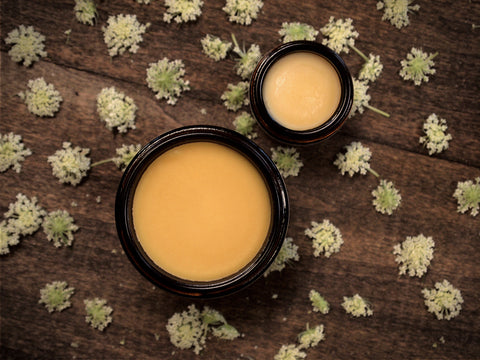Spring has arrived, which can mean long
days spent with your hands in the dirt. Exposure to moisture, dirt and
the unavoidable cut or splinter can leave hands feeling dry and rough.
We designed our Garden Carrot Hand Cream to keep hands hydrated and soft even under the toughest conditions.

Garden Carrot Hand Cream is formulated
with an ultra moisturizing base of Organic Coconut Oil, cold-pressed
Rosehip Seed Oil and Pacific Northwest Beeswax infused with healing
Yarrow, strengthening Gotu Kola and purifying Calendula. Enhanced with
precious essential oils of Carrot, Rose Geranium and Lemon Peel to
restore and hydrate damaged skin. Garden Carrot Hand Cream's aroma is
rich and earthy with floral and slightly sweet undertones - a subtle
scent that will please gardeners and mechanics alike.

Massage sparingly into clean, dry hands
to soothe and hydrate hard-working skin. Perfect for those who work
with their hands, or anyone looking for a luxurious, earthy hand cream.
Use this "dry" salve sparingly and it will leave skin feeling soft
without excess oil. An ideal all natural lotion alternative, keep a jar
near the sink to hydrate and soften hands after washing.
You don't have to sacrifice soft hands
for productivity. With a little care, you can make it through the garden
season with healthy, happy skin!










